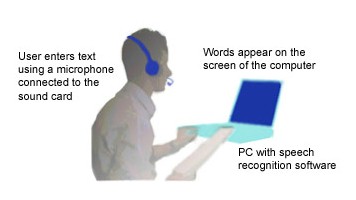|
|


Interactive Voice Response
This section of our technical library presents information and documentation relating to IVR and interactive voice response software as well as automatic call answering solutions.
Business phone systems and toll free answering systems (generally 800 numbers and their equivalent) are very popular for service and sales organizations, allowing customers and prospects to call your organization anywhere in the country.
Our PACER and Wizard IVR systems add another dimension to our call center phone system solutions. An Interactive Voice Response (IVR) processes inbound phone calls, plays recorded messages including information extracted from databases and the internet, and potentially routes calls to either in-house service agents or transfers the caller to an outside extension.
What is a speech-recognition system?
www.ictadvice.org.uk

Speech-recognition software runs on a personal computer and converts spoken words into text in a word processor. Words are entered into the computer via a microphone which is connected to the sound-card.
A typical price for a system, excluding the cost of a computer, ranges from £30 to £150. There are many publishers of speech-recognition software, the most popular being IBM Via Voice and Dragon Dictate (suppliers are listed at the end of this sheet). New and improved versions are regularly produced and older versions are often sold at greatly reduced prices. Invariably, the newest versions require the most modern computers of well-above-average specification. If you have an under-powered computer, the software will run very slowly and may be impossible to use. To successfully operate the latest software your computer should be at least a P3 machine with 128 Megabytes of RAM.
You will need to have a computer with a high-quality sound card. As sound cards are usually engineered for quality of sound output (their most frequent use), you might find that the sound card fitted as standard in your machine is not up to the job. Speech-recognition software sometimes comes with a utility to measure the quality of sound that your combination of microphone, sound card and computer recognises. Poor sound quality will reduce the recognition accuracy.
The microphones supplied with the software have been described as of 'adequate' quality. Better results can often be obtained by using a noise-cancelling microphone.
Using speech-recognition software
Before use, you will need to train the software so that a voice profile can be produced that is unique to you. After the training process, you will be able to speak to produce text in a word processor. With a well trained system, around 95 per cent of the words you speak can be correctly interpreted and placed into your word processor.
Be aware that when using speech-recognition software, your expectations are likely to be far higher than what can realistically be achieved. To make a speech-recognition system work successfully takes a great deal of hard work. Often, new users find the process far more time consuming than expected, and this can lead to poor results. This can be very demotivating, and many users give up at this stage. Quality support from someone who can help the users to learn the most effective ways of using the software is essential. There is no doubt, however, that the software works and can liberate many learners by allowing them to produce text in greater quantity and quality than by any other method.
Speech-recognition software is surprisingly tolerant of background noise. The steady burble of a classroom seems not to affect accuracy. What does upset the software is sudden sharp noises such as doors slamming. Try to choose a location without too many hard, reverberant surfaces. Make sure the location is warm (for the comfort of the humans who will be spending many hours using the software) and don't try to use the computer in a corridor! Speech-recognition software is not designed to be installed on a network, although several companies offer 'Enterprise Solutions' at a cost.
Wizard Simplifies Development
DSC provides IVR software including our IVR wizard development tool for creating interactive voice response applications.
Our IVR software lets you increase IVR development productivity by providing a visual development environment. IVR applications can be defined in minutes using this sophisticated, yet easy to use development tool.
DSC also has available a comprehensive IVR software library known as our IVR Wizard Software Development Kit. This optional package is available for programmers and systems adminstrators who wish to manage IVR programs fromLinux IVR, Unix, or Windows IVR operating environments.
Data collected by your phone ACD (Automatic Call Distribution) or IVR (Interactive Voice Response) systems can be passed to your existing PC, Unix or Web applications through our phone software.
The PACER predictive dialer can automatically call your customers and pass only connected calls to your agents. With our computer telephony software, your telephone and computer work together to provide cost-saving benefits.
|




